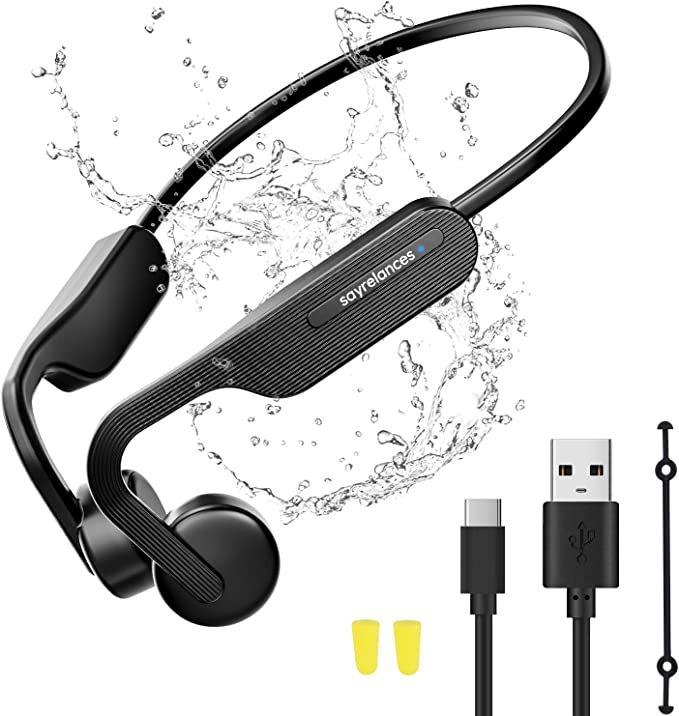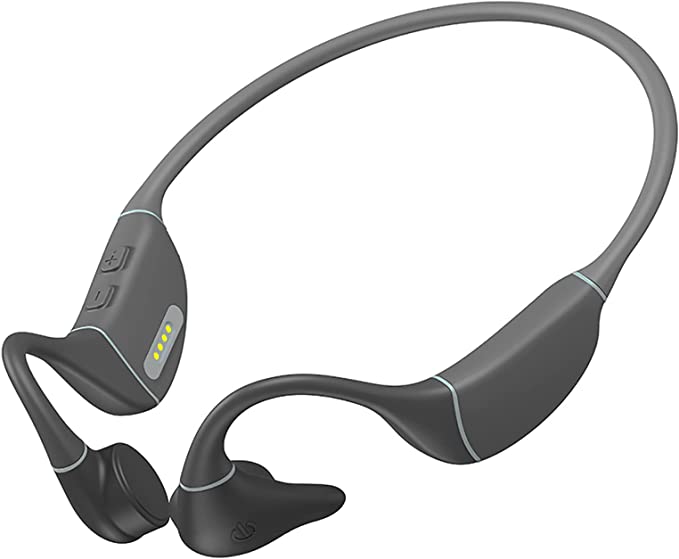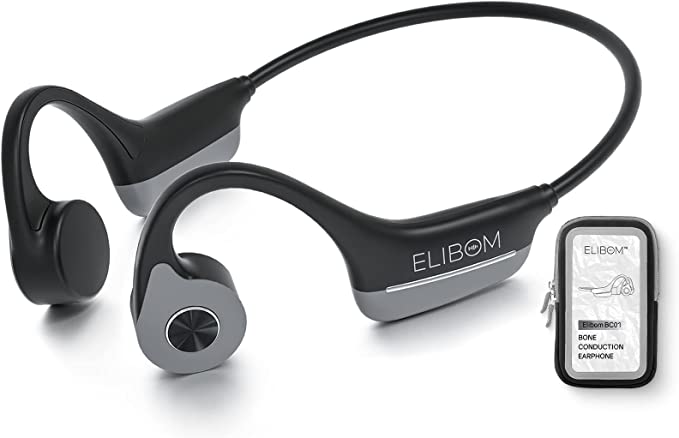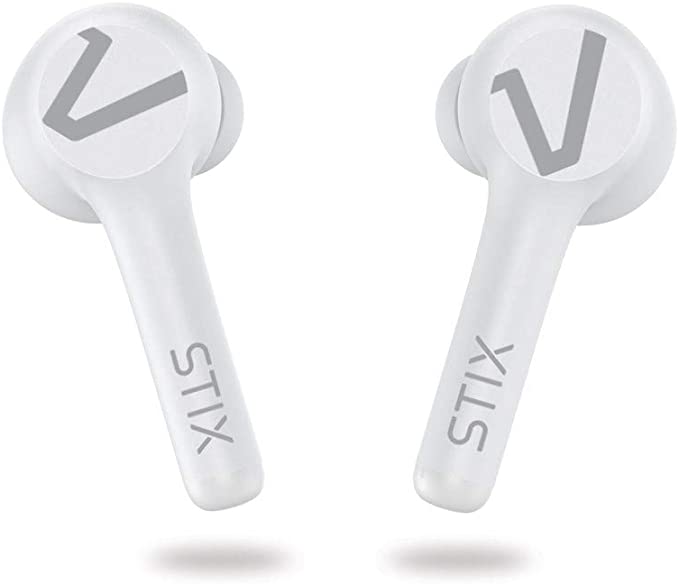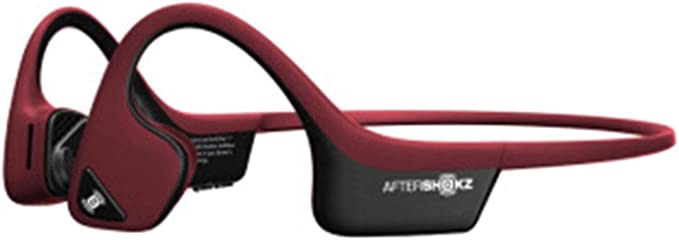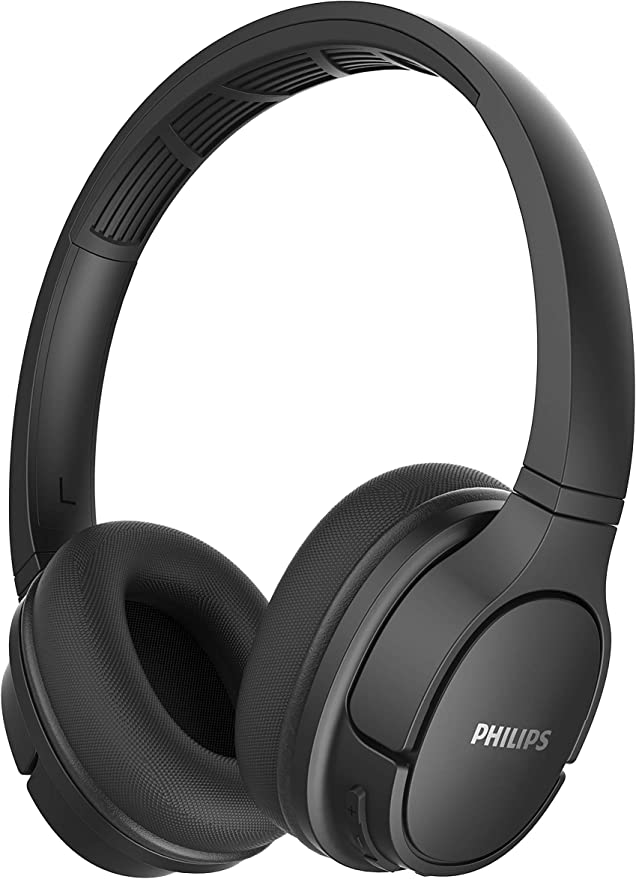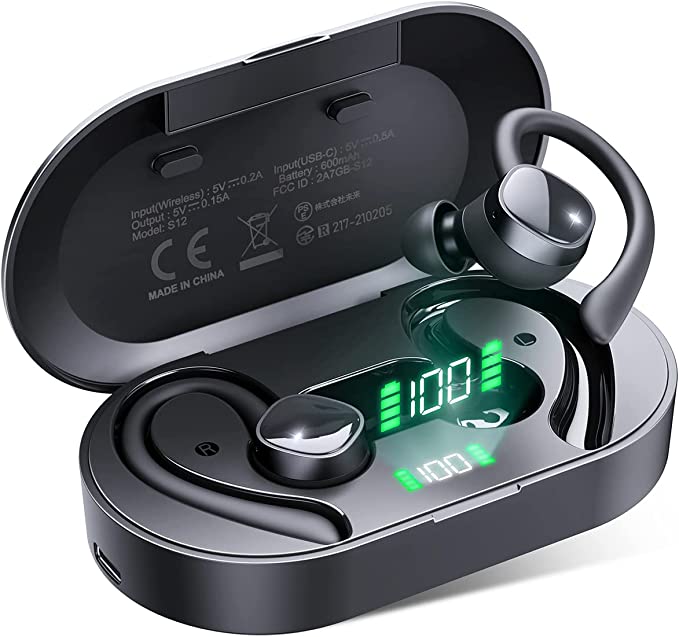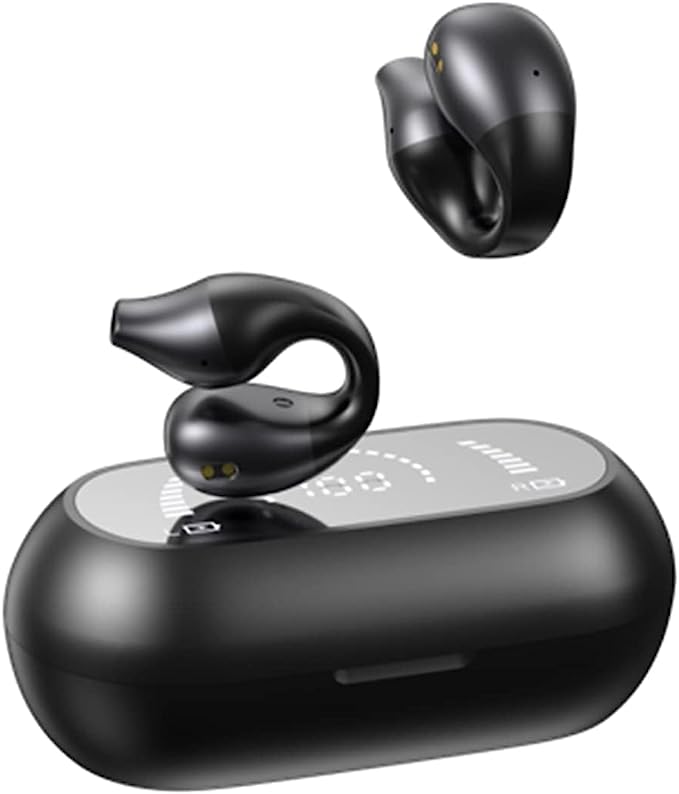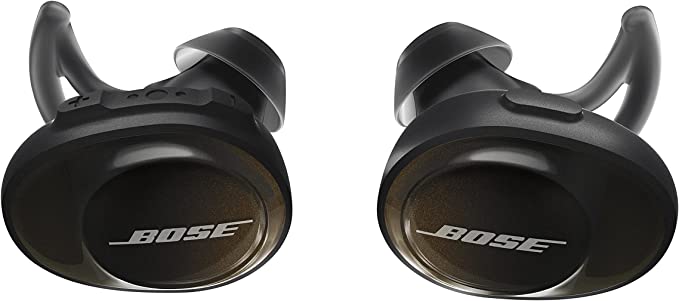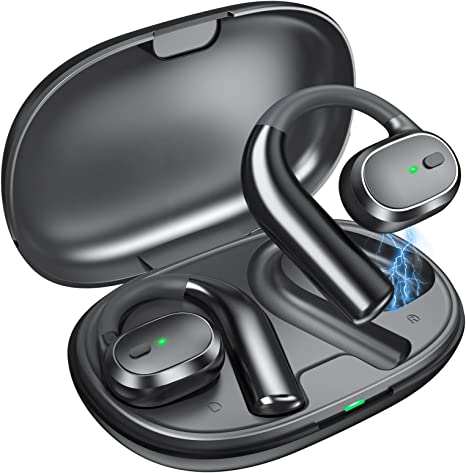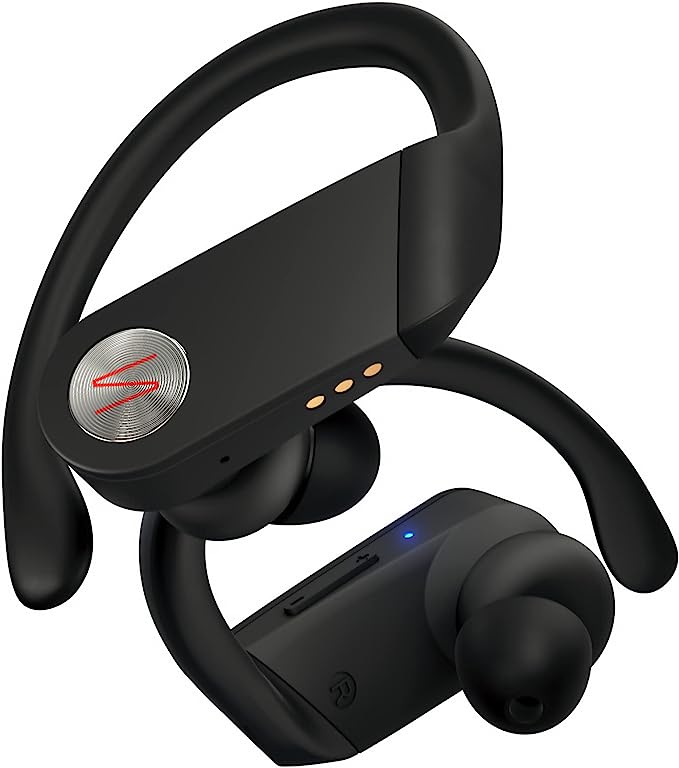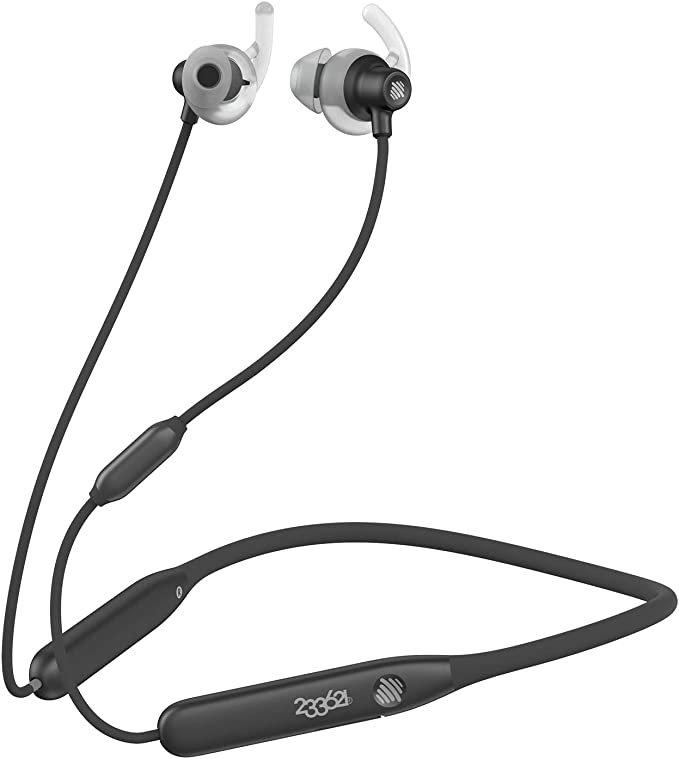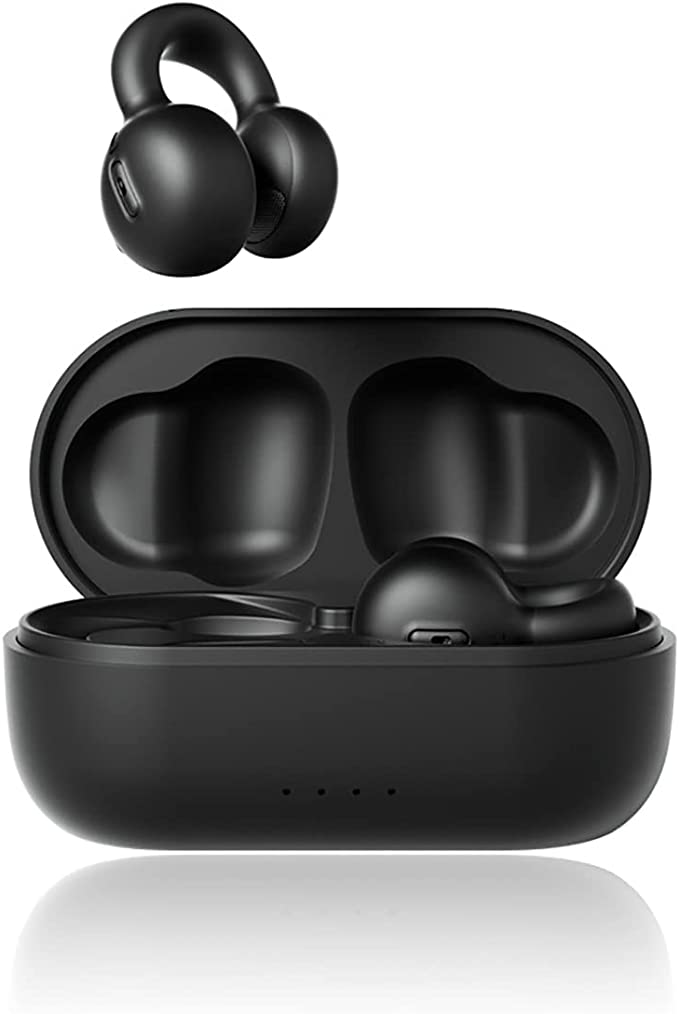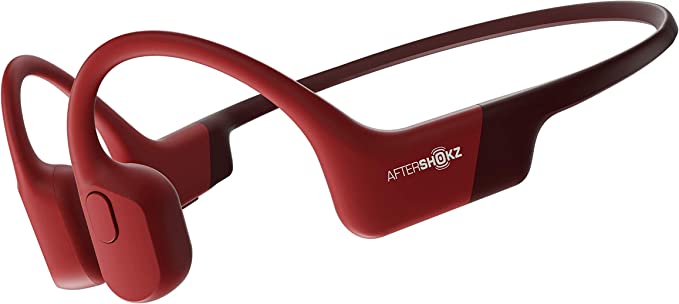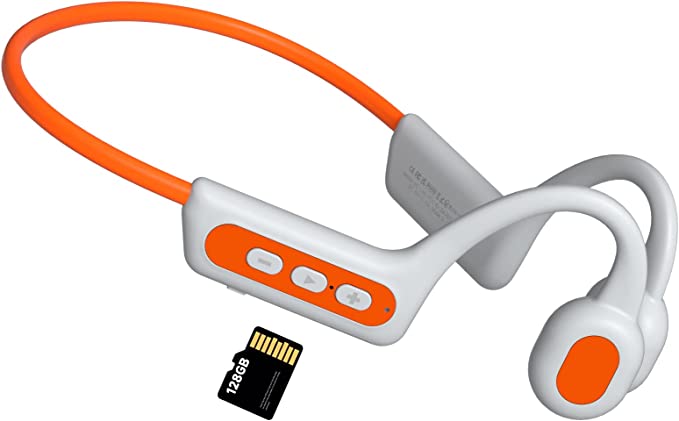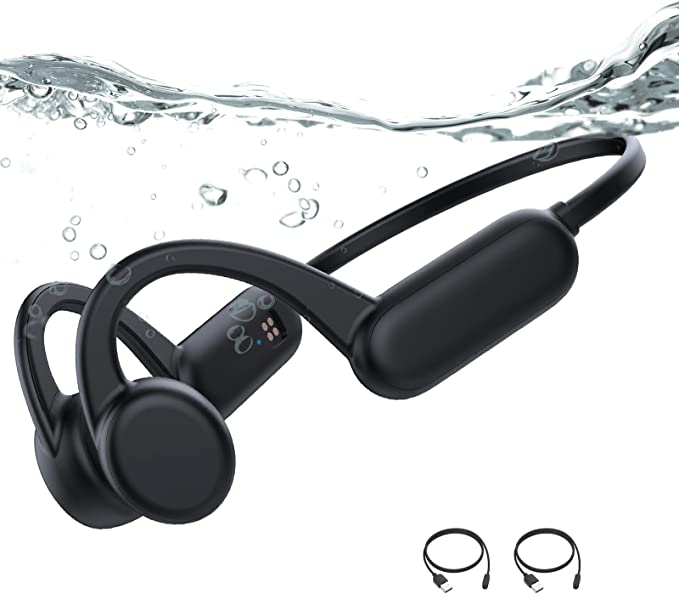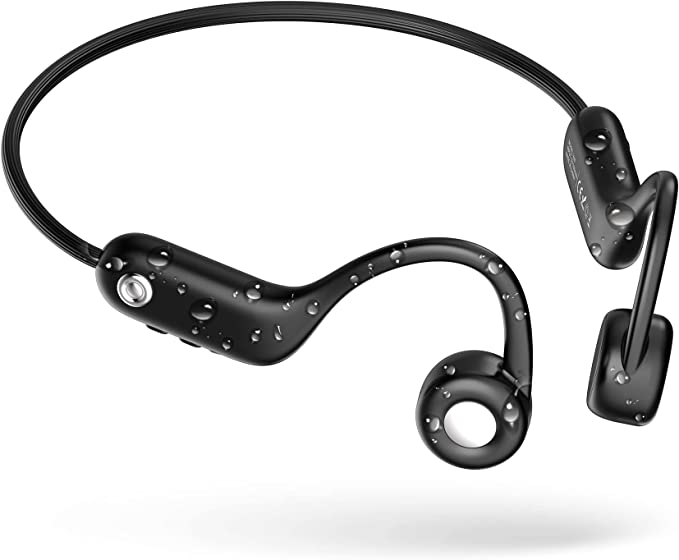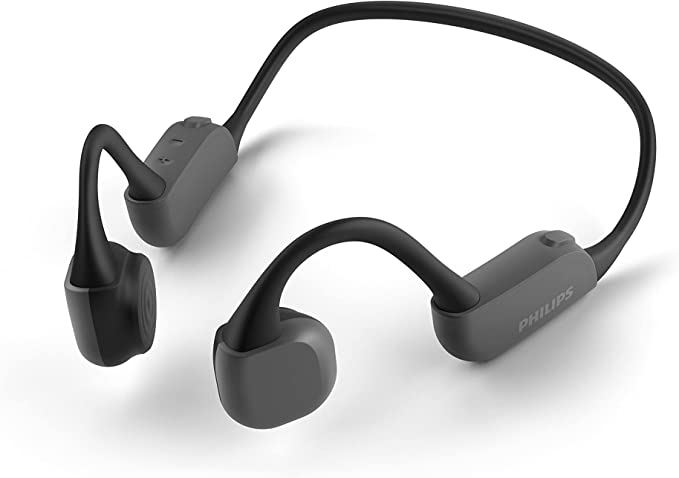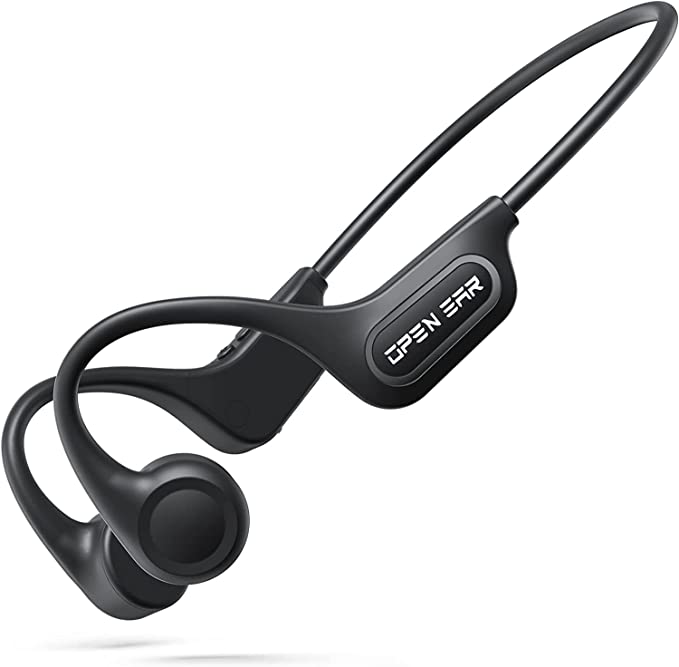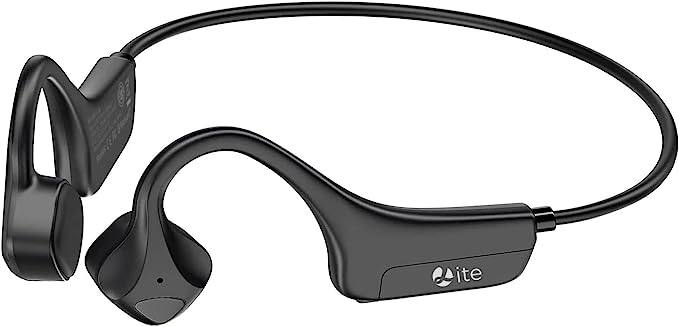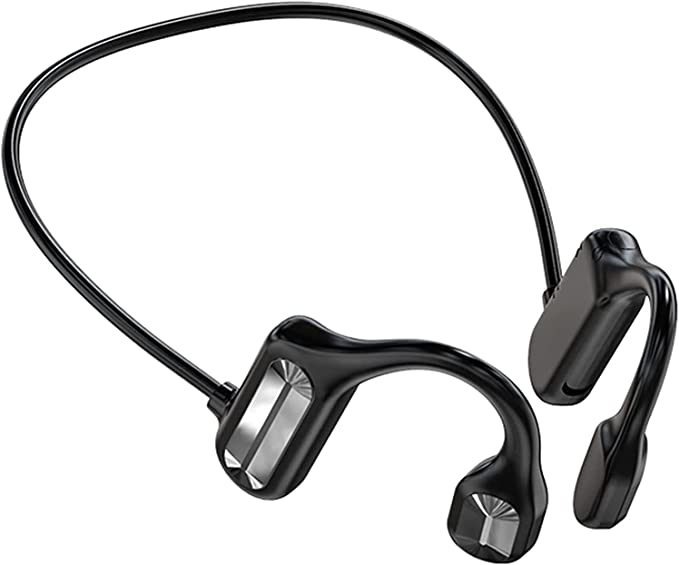PLUZIE Open-Ear Headphones: Stay Safe & Aware with Bone Conduction Technology
Update on Feb. 22, 2025, 5:06 a.m.
Picture this: you’re enjoying a brisk evening run, your favorite upbeat playlist pushing you forward. Suddenly, a cyclist speeds past, ringing their bell – a warning you almost missed because your earbuds were completely blocking out the sounds of the world around you. This near-miss highlights a critical issue for anyone who enjoys listening to music or podcasts while exercising outdoors or navigating busy streets: the loss of situational awareness. Traditional headphones, while excellent for immersive audio, can create a dangerous disconnect from your environment. But what if there was a way to enjoy your audio and stay safely connected to the world around you? Enter the fascinating world of bone conduction technology, and a compelling example of its application: the PLUZIE Open-Ear Bluetooth Bone Conduction Sports Headphones.
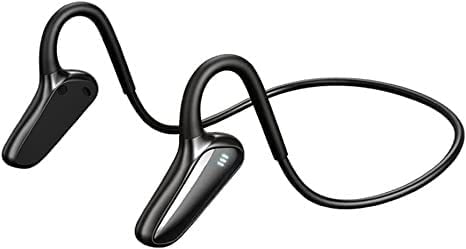
The Science of Sound: How Bone Conduction Works
To understand bone conduction, let’s first take a quick refresher on how hearing works. Sound, fundamentally, is vibration. When you hear a car horn, for example, the horn creates vibrations that travel through the air as sound waves. These waves reach your outer ear, travel down your ear canal, and cause your eardrum to vibrate. These vibrations are then amplified by tiny bones in your middle ear (the malleus, incus, and stapes, often called the hammer, anvil, and stirrup) and transmitted to the cochlea, a fluid-filled, snail-shaped structure in your inner ear. Within the cochlea, these vibrations are converted into electrical signals that your brain interprets as sound.
Bone conduction takes a different path. Instead of relying on air to transmit sound waves, it uses the bones of your skull. Think about how you hear your own voice – it sounds different to you than it does to others because you’re primarily hearing it through the vibrations of your skull bones. Or consider how whales communicate across vast ocean distances; they use their jawbones to pick up low-frequency vibrations in the water.
Bone conduction headphones utilize this principle. They employ transducers – small devices that convert electrical signals into mechanical vibrations – placed against your cheekbones, just in front of your ears. These transducers vibrate, and those vibrations travel directly through your skull bones to your cochlea, bypassing your eardrum and middle ear entirely. Because your ear canals remain open, you can still hear ambient sounds clearly.
A Brief History of Bone Conduction
The use of bone conduction to transmit sound is not new; in fact, it dates back centuries. One of the earliest practical applications was to the field of hearing aids. Ludwig van Beethoven, use a rod connect to his piano, the other end, clenched between his teeth.
PLUZIE Headphones: A Case Study in Bone Conduction
The PLUZIE Open-Ear Bluetooth Bone Conduction Sports Headphones are designed to provide a safe, comfortable, and high-quality audio experience, particularly for athletes and those who need to maintain situational awareness. While detailed specifications are limited, we can explore the core features and how they leverage bone conduction technology. The PLUZIE headphones offer:
- Open-Ear Design: This is the defining feature, allowing you to hear your audio while remaining fully aware of your surroundings.
- Wireless Bluetooth Connectivity: Provides freedom from tangled wires, connecting seamlessly to your smartphone or other Bluetooth-enabled devices.
- Sweatproof and Drop-Proof Construction: Built to withstand the rigors of workouts and outdoor activities.
- Lightweight Design: Ensures comfort even during extended use.
- Long Battery Life: Allows for extended listening without frequent recharging (specific battery life data is needed for a more precise claim).
Feature Deep Dive (with Science Explanations)
Let’s delve deeper into how these features work and the science behind them:
Open-Ear Design and Situational Awareness: Your Safety Soundtrack
The open-ear design of the PLUZIE headphones is the cornerstone of their safety benefits. By leaving your ear canals unobstructed, you can hear ambient sounds – traffic, conversations, approaching cyclists, the rustling of leaves, a dog barking – just as you normally would. This is crucial for anyone exercising outdoors, navigating busy streets, or simply wanting to remain aware of their surroundings. It’s like having a personal soundtrack to your activity without being isolated from the world around you. This design contrasts sharply with traditional in-ear or over-ear headphones, which can significantly reduce or even eliminate your ability to hear these important environmental cues.
Bluetooth Connectivity: Wireless Freedom and the Magic of Radio Waves
The PLUZIE headphones utilize Bluetooth, a short-range wireless technology that allows devices to communicate without cables. Bluetooth uses radio waves in the 2.4 GHz frequency band to transmit data. When you pair your PLUZIE headphones with your smartphone, they establish a secure, low-power connection. The audio signal from your phone is converted into a digital signal, modulated onto a radio wave, and transmitted to the headphones. The headphones then receive the signal, demodulate it, convert it back into an analog audio signal, and send it to the transducers. This all happens incredibly quickly and efficiently, providing a seamless wireless listening experience. The specific Bluetooth version (e.g., Bluetooth 5.0, 5.2) would provide further insight into connection stability, range, and power efficiency.
Sweatproof and Drop-Proof: Materials Science Meets the Demands of Sport
The sweatproof and drop-proof nature of the PLUZIE headphones speaks to their robust design and the careful selection of materials. Sweatproofing typically involves using materials that are resistant to moisture and corrosion, such as specific types of plastics and rubbers. Internal components may also be coated with a hydrophobic (water-repelling) layer to prevent damage from sweat. Drop-proofing often involves using impact-resistant materials and a design that minimizes stress on vulnerable components. The specific materials and construction techniques used in the PLUZIE headphones would provide a more detailed understanding of their durability.
Lightweight Comfort: Ergonomics for Extended Wear
Comfort is paramount, especially for sports headphones. The PLUZIE headphones are described as lightweight, which is a crucial factor in minimizing discomfort during extended use. The ergonomic design likely incorporates features such as a secure fit that doesn’t put pressure on sensitive areas of the ear or head. The specific weight (in grams or ounces) and the materials used (e.g., titanium, flexible polymers) would further illuminate the comfort aspects of the design.
Long Battery Life: Powering Your Adventures (Details Needed)
While the exact battery life of the PLUZIE headphones is unknown, the claim of “long battery life” is a significant selling point. Achieving long battery life in a small, lightweight device requires a combination of factors: a high-capacity battery, efficient power management circuitry, and low-power consumption by the Bluetooth chip and transducers. Ideally, the battery life would be specified in hours of playback time, allowing for a direct comparison with other headphones.
Who Can Benefit from Bone Conduction?
Bone conduction headphones, like the PLUZIE, offer advantages to a wide range of users:
- Runners and Cyclists: The open-ear design is paramount for safety, allowing them to hear traffic and other potential hazards.
- Gym-Goers: They can stay aware of their surroundings and hear trainers or other people while still enjoying their music.
- Hikers and Outdoor Enthusiasts: They can appreciate the sounds of nature while listening to audio.
- Commuters: They can stay aware of announcements and their surroundings while on public transportation.
- Office Workers: In open-plan offices, bone conduction headphones can provide a degree of privacy without complete isolation.
- Individuals with Certain Types of Hearing Loss: Bone conduction can be beneficial for people with conductive hearing loss, which affects the outer or middle ear, as it bypasses these areas. However, it’s crucial to emphasize that bone conduction headphones are not a medical device and anyone with hearing concerns should consult an audiologist.
Addressing Potential Concerns: Sound Leakage and Sound Quality
It’s important to be transparent about the potential limitations of bone conduction technology. Two common concerns are sound leakage and sound quality.
- Sound Leakage: Because the transducers vibrate against your skull, some sound can escape and be audible to people nearby, especially at higher volumes. This is generally less of an issue in outdoor settings but can be a consideration in quiet environments.
- Sound Quality: While bone conduction technology has improved significantly, it generally doesn’t offer the same bass response and overall fidelity as high-quality traditional headphones. This is because transmitting low frequencies through bone is more challenging than through air. However, for many users, the benefits of situational awareness and comfort outweigh the slight compromise in sound quality, especially during activities where safety is paramount.
The Future of Bone Conduction
Bone conduction technology is continuously evolving. Future advancements are likely to focus on:
- Improved Sound Quality: Researchers are working on new transducer designs and materials to enhance bass response and overall fidelity.
- Reduced Sound Leakage: New designs and materials aim to minimize the amount of sound that escapes from the headphones.
- Miniaturization: Making bone conduction headphones even smaller and lighter.
- Integration with Other Technologies: Combining bone conduction with features like noise cancellation, voice assistants, and even augmented reality.
Conclusion: The Open-Ear Advantage
Bone conduction technology offers a compelling alternative to traditional headphones, particularly for those who prioritize safety and situational awareness. The PLUZIE Open-Ear Bluetooth Bone Conduction Sports Headphones, with their open-ear design, wireless connectivity, sweatproof construction, and lightweight comfort, provide a practical example of the benefits of this technology. While some limitations exist regarding sound leakage and absolute fidelity compared to high-end traditional headphones, the ability to hear your surroundings while enjoying your audio makes bone conduction a valuable option for athletes, outdoor enthusiasts, and anyone who wants to stay connected to the world around them. As the technology continues to develop, we can expect even more innovative and refined bone conduction headphones in the future.
